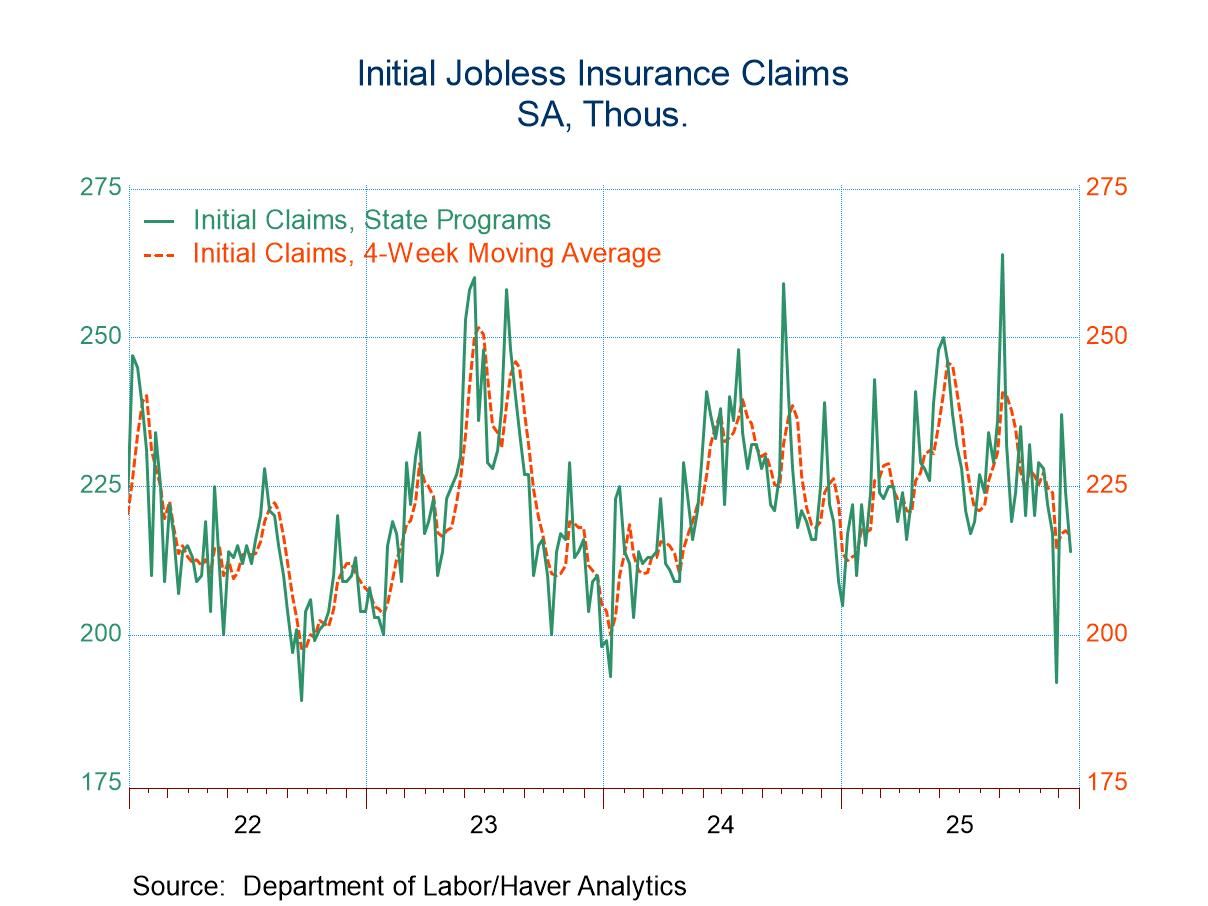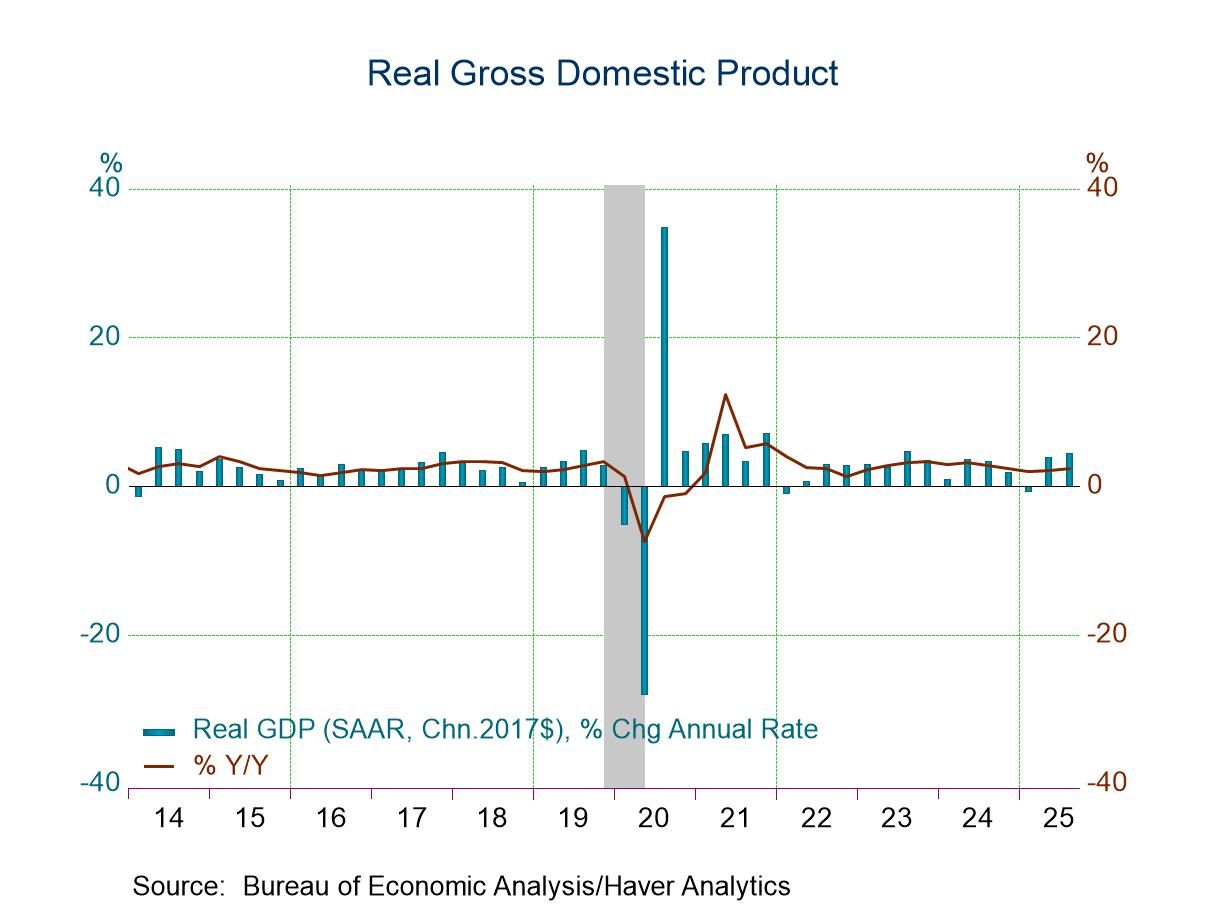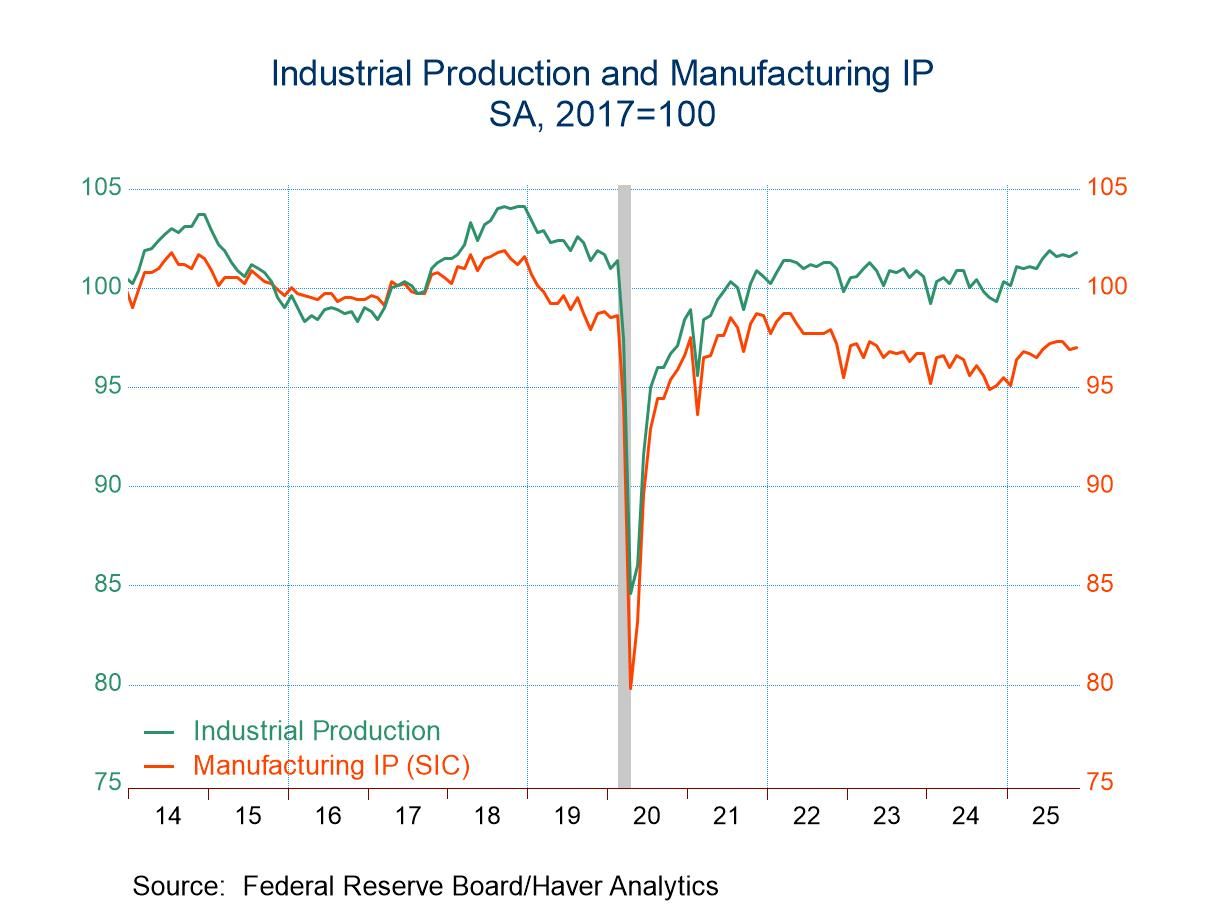 Global| Sep 28 2017
Global| Sep 28 2017U.S. GDP Growth is Revised Up as Profits Weakened
by:Tom Moeller
|in:Economy in Brief
Summary
Economic growth during Q2'17 was revised higher to 3.1% (2.2% y/y) from 3.0% in the second estimate, and compared to 2.6% in the advance report. It was the quickest rate of increase since Q1'15. The latest figure matched expectations [...]
Economic growth during Q2'17 was revised higher to 3.1% (2.2% y/y) from 3.0% in the second estimate, and compared to 2.6% in the advance report. It was the quickest rate of increase since Q1'15. The latest figure matched expectations in the Action Economics Forecast Survey.
After-tax corporate profits without IVA & CCA fell 2.0% (+7.4% y/y), revised from -1.4% following a 1.3% gain during Q1. Before-tax earnings with IVA & CCA improved a lessened 0.7% (+6.4% y/y) following a 2.1% Q1 decline. Nonfinancial sector earnings rose a reduced 4.9% (7.2% y/y). Financial sector earnings declined a sharper 7.1% (+8.6% y/y) while foreign sector profits fell a larger 2.5% (+6.8% y/y).
Inventory change had a slightly increased 0.1 percentage point effect on growth after decumulation subtracted 1.5 percentage points in Q1'17 and subtracted 0.4 percentage points during all of last year. Improvement in the foreign trade deficit added an unrevised 0.2 percentage points to growth, as it did during Q1. Exports grew a little-changed 3.5% (3.2% y/y) and imports rose 1.5% (4.1% y/y).
Growth in domestic final sales was unrevised at 2.7% (2.4% y/y). Consumer spending growth held at 3.3% (2.7% y/y), the strongest growth in four quarters. The gain in durable goods buying was lessened to 7.6% (6.4% y/y), the quarterly strength led by a 13.2% jump (10.7% y/y) in recreational goods & vehicles buying. Home furnishings & appliance purchases rose 9.1% (6.2 % y/y), twice the growth during Q1 while spending on motor vehicles increased 0.8% (+4.4% y/y). Each of these figures were revised lower. Nondurable goods spending rose a little-changed 4.2% (2.0% y/y). Apparel purchases jumped a lessened 9.9% (2.1 % y/y) while gasoline & energy product consumption rose a strengthened 8.2% (-0.8% y/y). Services spending gained an upwardly revised 2.1% (2.3% y/y) and equaled growth during all of last year. Spending on housing & utilities grew a little-changed 3.4% (1.1% y/y) while health care spending grew 1.3% (+2.0% y/y), instead of declining slightly as previously indicated. Recreation spending increased a strengthened 1.4% (3.3% y/y).
Business fixed investment increased a little-changed 6.7% (4.3% y/y). Growth during the first half of 2017 remained the strongest in three years. Spending on equipment increased an unchanged 8.8% (3.1% y/y) as information processing equipment investment rose 10.7% (7.0% y/y), the strongest growth since Q3'15. Spending on intellectual property products rose a lessened 3.7% (3.3% y/y). Spending growth on software was lowered to 24.8% (5.0% y/y).
Investment in the residential sector was weakened as it posted a 7.3% decline (+1.3% y/y), reversing roughly half of the Q1 gain.
Government spending was little-revised at a 0.2% decline (-0.0% y/y). Federal government spending rose an unrevised 1.9% (0.1% y/y) as the gain in defense purchases continued strong at 4.7% (+0.1% y/y). State & local government spending also was little changed, showing a 1.5% (-0.2% y/y) decline.
The unrevised 1.0% gain (1.6% y/y) in the GDP price index was half the increases of the prior two quarters. The PCE price index rose 0.3% (1.6% y/y) as the index less food & energy increased 0.9% (1.5% y/y), half the rise during Q1. The nonresidential fixed investment price index rose 1.9% (0.9% y/y), about the same as during Q1, but up from the slight decline in 2016. The residential price index jumped a strengthened 4.6% (4.4% y/y).
The GDP figures can be found in Haver's USECON and USNA database. USNA contains virtually all of the Bureau of Economic Analysis' detail in the national accounts, including the integrated economic accounts and the recently added GDP data for U.S. Territories. The Action Economics consensus estimates can be found in AS1REPNA.
U.S. Initial Claims for Unemployment
Insurance Increase Initial unemployment insurance claims rose to 272,000 during
the week ended September 23 from 260,000 in the prior week, revised from
259,000. Expectations had been for 268,000 initial claims in the Action
Economics Forecast Survey. The four-week moving average jumped to 277,750. Continuing claims for unemployment insurance declined to
1.934 million (-6.5% y/y) in the week ended September 16, after rising to 1.979
million the week before. The four-week moving average of claimants eased to
1.950 million. The insured unemployment rate remained at the record low of
1.4%. Insured rates of unemployment varied widely across the
country. For the week ended September 9, the insured rate of unemployment in
Texas spiked to 1.67% from 1.11% in the prior week. The level of initial claims
remained high there at 32,259 (96.8% y/y), though that was down sharply versus
the prior two weeks. The lowest insured rates of unemployment were in South
Dakota (0.22%), Nebraska (0.43%), Indiana (0.48%), Utah (0.50%), North Carolina
(0.51%) and Florida (0.54%). The highest rates were found in Massachusetts
(1.51%), Connecticut (1.89%), Pennsylvania (1.82%), California (1.90%), Alaska
(2.15%) and New Jersey (2.33%). These state data are not seasonally adjusted. Data on weekly unemployment insurance are contained in
Haver's WEEKLY database and they are summarized monthly in USECON.
Data for individual states are in REGIONW. The expectations figure is
from the Action Economics Forecast Survey, carried in the AS1REPNA
database. 1.5
by Tom Moeller September
28, 2017
Unemployment Insurance (SA, 000s)
09/23/17
09/16/17
09/09/17
Y/Y %
2016
2015
2014
Initial Claims
272
260
281
8.3
263
278
308
Continuing Claims
--
1,934
1,979
-6.5
2,136
2,267
2,599
Insured Unemployment Rate (%)
--
1.4
1.4
(Sep 2016)1.6
1.7
2.0
Tom Moeller
AuthorMore in Author Profile »Prior to joining Haver Analytics in 2000, Mr. Moeller worked as the Economist at Chancellor Capital Management from 1985 to 1999. There, he developed comprehensive economic forecasts and interpreted economic data for equity and fixed income portfolio managers. Also at Chancellor, Mr. Moeller worked as an equity analyst and was responsible for researching and rating companies in the economically sensitive automobile and housing industries for investment in Chancellor’s equity portfolio. Prior to joining Chancellor, Mr. Moeller was an Economist at Citibank from 1979 to 1984. He also analyzed pricing behavior in the metals industry for the Council on Wage and Price Stability in Washington, D.C. In 1999, Mr. Moeller received the award for most accurate forecast from the Forecasters' Club of New York. From 1990 to 1992 he was President of the New York Association for Business Economists. Mr. Moeller earned an M.B.A. in Finance from Fordham University, where he graduated in 1987. He holds a Bachelor of Arts in Economics from George Washington University.






